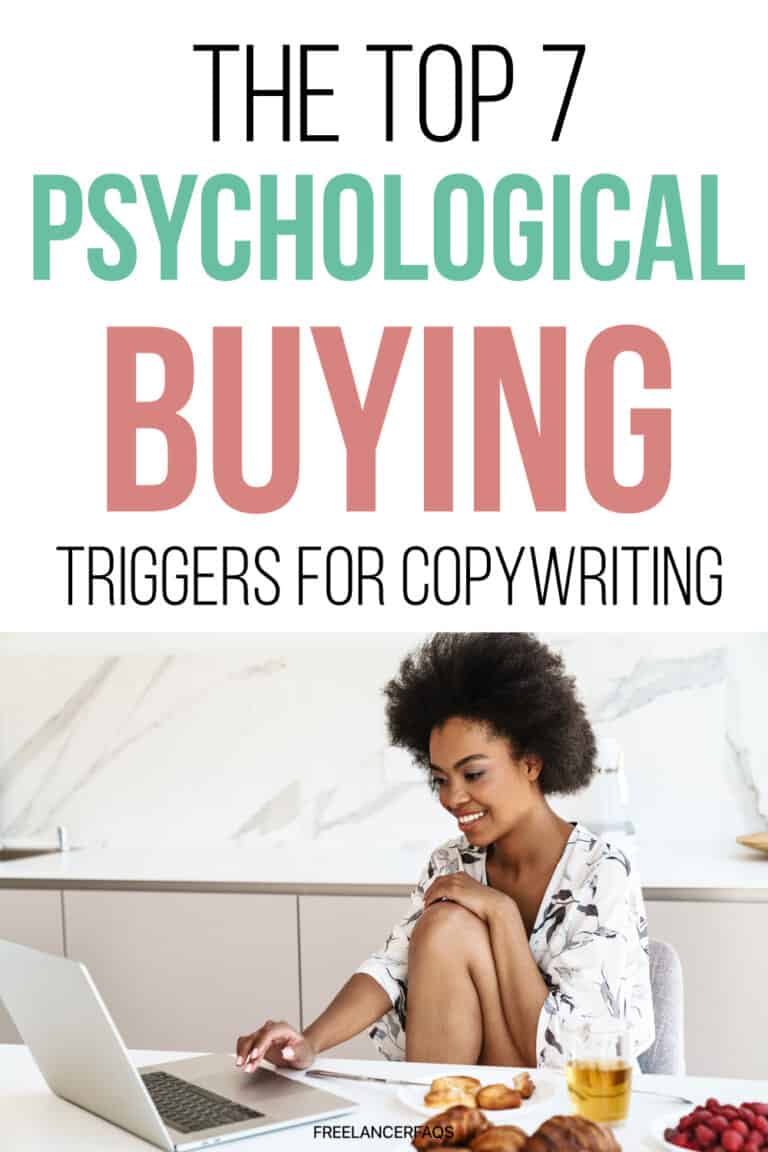Let’s face it – humans are irrational.
Dan Ariely refers to them as “Predictably Irrational” in his aptly named book.

The predictable part is good news for you as a writer – it means that psychological triggers can be used in copy to produce similar results over time.
Knowing some psychological buying triggers can help you craft words that bring potential clients from passivity to a state of action.
Incorporating these triggers in your copy will help impress your clients and significantly boost their results.
So, what are some powerful psychological triggers, and how can you use them for maximum results? I’m glad you asked!
Let’s dive in.
1. Reciprocity
Have you ever given someone a birthday gift because they gifted you one in the past?
Or maybe you’ve paid someone a compliment because they gave one to you.
This example is the essence of reciprocity, deeply rooted in our innate desire for social connections. It’s a sense of obligation when we’ve received something nice from someone else.
Charities understand this when they mail you a set of return address labels or calendars. Cosmetics companies know the benefit of sending you free samples.
How can you leverage this concept in your copywriting?
Discuss with your client the idea of offering a free trial or complimentary coaching call.
You can offer a valuable download or printable in exchange for an email address.
Or better yet, consistently deliver such high-quality, free content that customers feel compelled to reciprocate by signing up for your services.
2. Social Proof
People have a natural affinity for understanding the opinions of their peers, friends, and family regarding various products and services.
This fact illustrates the extreme importance of social proof.
Have you ever searched for product reviews online before making a purchase?
Or did you watch a show or movie because your Facebook friends gave it rave reviews?
This behavior demonstrates the importance of highlighting testimonials in your copy.
Authentic testimonials with photos and names add a personal touch that can influence potential customers to act.
Incorporating video testimonials can also work wonders.
Humans love knowing that they are making a choice that others made successfully in the past.
3. Scarcity
Only 3 items left in stock!
Going fast – this offer won’t last forever!
You have 12 hours left before this opportunity is gone forever.
Supply and demand have always been influential movers of economic conditions.
The more scarce we believe an item is, the more we are motivated to act.
You can use this trigger to motivate a potential buyer by adding a countdown timer to a sales page for a limited-time offer.
You can also include notes about a physical item’s low or limited stock availability.
However, ensure you are using true urgency rather than fake urgency. You risk losing your reader’s trust if you make a claim that the audience later realizes is untrue (like opening the cart for an extra day after the deadline).
Scarcity can be a powerful motivator, encouraging readers to make decisions quickly rather than procrastinating and moving on to other matters.
4. Admitting a Flaw
 Do you remember Domino’s Pizza’s ad campaign from 2009?
Do you remember Domino’s Pizza’s ad campaign from 2009?
The commercials featured the company’s president apologizing for their subpar pizza.
The ads proclaimed that the sauce tasted like ketchup and compared the crust cardboard.
Why was this ad campaign so successful? Because it captured attention and built trust.
Admitting a flaw might appear risky, but it enhances trust and credibility.
You can use this strategy by admitting that there’s room for improvement in your product or service.
It shows that you understand the audience and their needs and will go above and beyond to provide an honest and trustworthy offering.
5. Decoy Pricing
Have you ever come across an offer with three pricing tiers?
There may be a basic option (least expensive), an enhanced package (median priced), and a premium offer (highest cost).
The principle of decoy pricing says that most people will choose a middle-tier offer.
This phenomenon happens because they might associate the cheapest option with inferior quality.
Another approach is to display a high price representing a high value but cross it out to reveal a lower cost. That way, the reader believes they receive a high-value item for a bargain.
Decoy pricing taps into the perceived value in the prospect’s mind, making it a compelling motivator for purchase decisions.
6. Specificity
In addition to emotion, people are also highly motivated by facts and logic.
Using exact and specific numbers creates curiosity and establishes trust.
The more specific and detailed, the better.
A statistic like “83.6% of customers found success” is more believable to readers than “85% of customers found success.”
Rather than using vague terms, like “a lot of people have tried and failed,” include precise terms, such as “8,974 people have tried and failed”.
Specificity lends credibility and fosters trust in your content.
7. Storytelling
As a writer, you probably understand the profound value of a story to evoke emotions.
Stories capture our imagination by appealing to our senses. You can describe the sights, sounds, tastes, and smells to transport your reader to another place.
When you’ve established the scene and mood for your story, you can help your reader experience both positive and negative emotions.
First, you can dig into the pain of inaction. Where might your reader be in their current life circumstances, and what will never improve if things remain the same?
Next, you can draw them into the benefits of your offer by narrating a story about their potential life after they accept your offer.
Stories are not only valuable in transporting your reader to a new perspective, but they are always subjectively true. Arguing against a story is impossible because the possibilities are unlimited.
Using Buying Triggers to Enhance Copy
At the beginning of your writing process, brainstorm ideas to use multiple buying triggers in your content.
This method can help you create a well-rounded strategy to meet customers where they are and help guide them toward your offer.
Psychology is a building block for stellar copywriting, and you will be in demand as a writer who understands buying triggers and how to use them effectively!



Leave a Reply